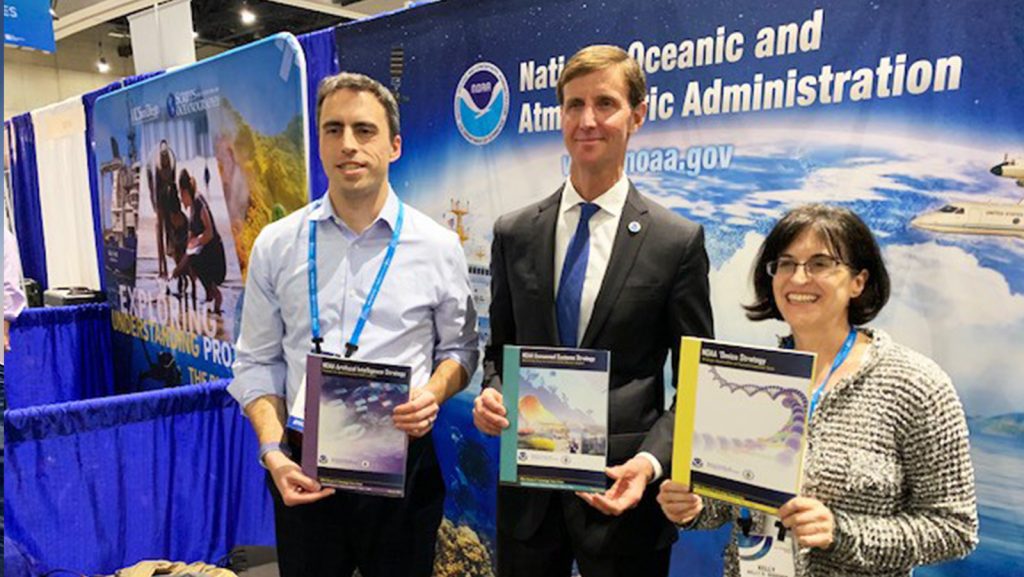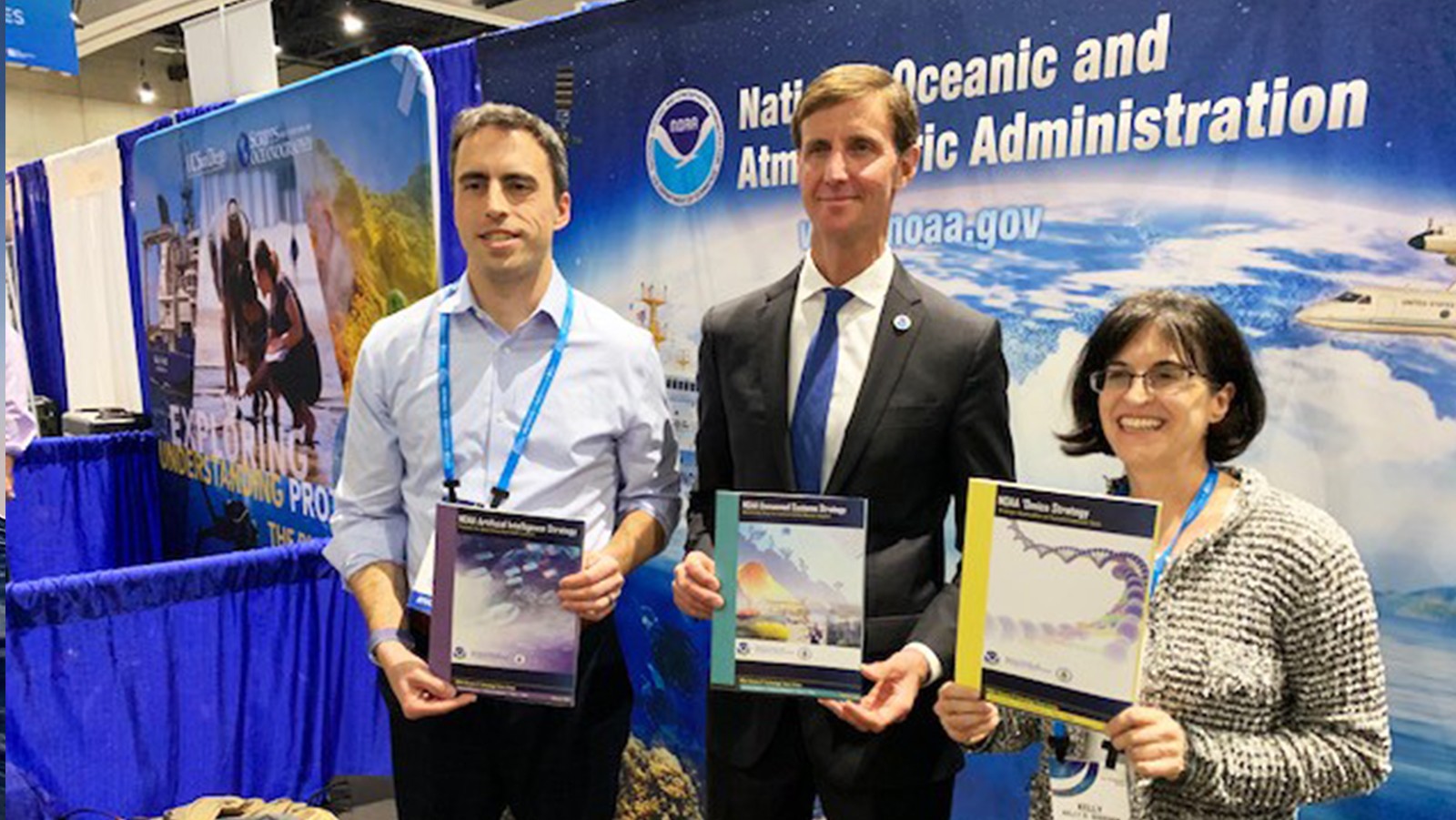At the 2020 international Ocean Sciences meeting, AOML microbiologist Kelly Goodwin helped NOAA unveil a new strategy for how the agency will dramatically expand its use of ‘Omics in the coming years. The ‘Omics strategy is one of four blueprints NOAA premiered that will guide transformative advancements in the quality and timeliness of its science, products, and services.
Goodwin played a pivotal role in developing NOAA’s ‘Omics strategy document by serving as the co-chair of the ‘Omics Strategy task force. In this role, she worked closely with colleagues at the National Marine Fisheries Service to become familiar with the many ways ‘Omics is being used across the agency. She helped write both the strategy and implementation plan for how ‘Omics research will help NOAA better monitor and understand the biological communities of the oceans and Great Lakes.
“It has been gratifying to learn about the amazing work NOAA is doing across the agency in terms of ‘Omics,” she said. “It’s a privilege to share stories about how we are working to harness these tools to help meet mission objectives.”
‘Omics refers to a suite of advanced methods to analyze material such as DNA, RNA, proteins, and metabolites. ‘Omics methods are faster, cheaper, and less invasive than traditional methods, providing more timely access to information.
NOAA’s ‘Omics strategy will improve ecosystem assessments and forecasts, advance stewardship, and promote the Blue Economy. National priorities for its use include fisheries management, aquaculture development, food, and water safety, species and habitat conservation, seafood consumer protection, and natural product discovery.
NOAA’s three other emerging science and technology focus areas include unmanned systems, artificial intelligence, and cloud services, all of which also support a broad range of pre-existing programs across the agency. For example, AOML uses a variety of unmanned systems to collect highly accurate, time-sensitive data in support of climate and weather studies, while an example of its use of artificial intelligence includes ecoforecasts that alert marine managers to environmental conditions that foreshadow coral bleaching.
Additionally, cloud computing partnerships with commercial cloud service providers enable AOML scientists to store and crunch massive quantities of data. Implementing the four new strategies will enable NOAA to more fully address complex challenges that exist across multiple missions, accelerate research advances, solve tough problems, and set a course to strengthen its leadership role as a science and technology innovator in the coming decades. As efforts proceed, NOAA is poised to more efficiently and effectively coordinate their development and use, enabling the agency to remain at the forefront of environmental knowledge.

premiere three of NOAA’s four new science and technology strategy documents. Photo Credit: NOAA.
